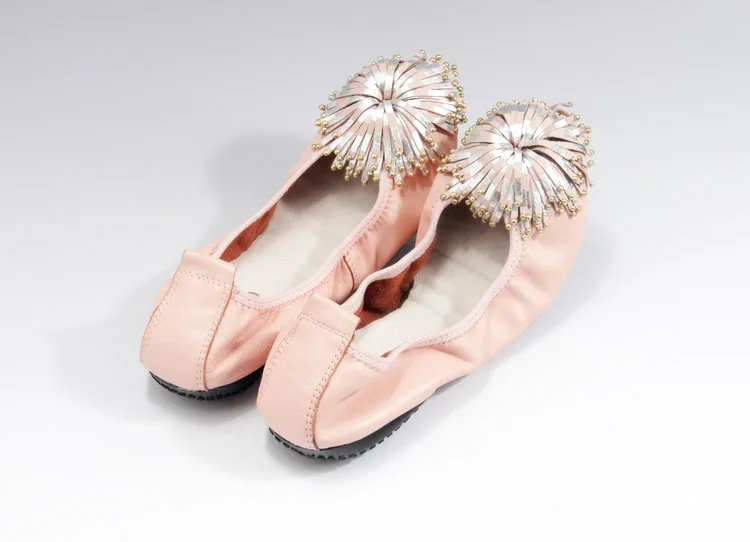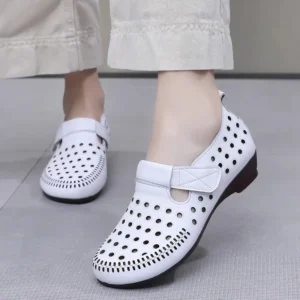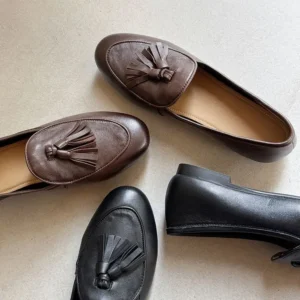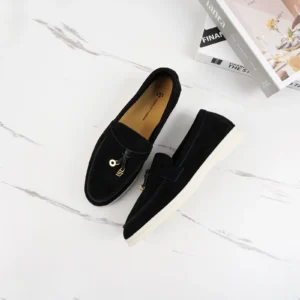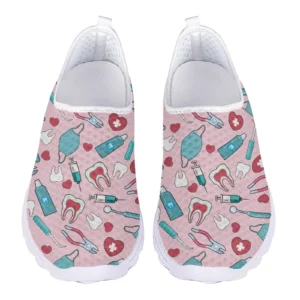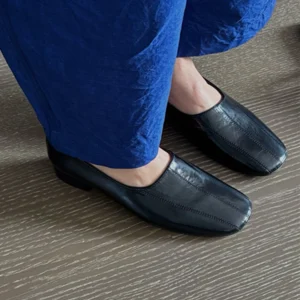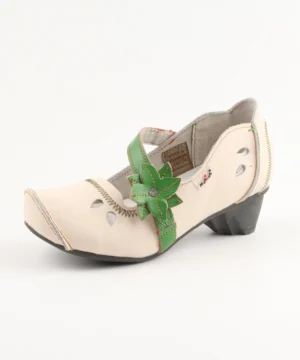“Give me the luxuries of life and I will willingly do without the necessities.” – Fine leather footwear may not be a necessity, but with proper care, it becomes a luxury that lasts a lifetime.
Understanding the Value of Proper Leather Footwear Care
Quality leather footwear represents more than just a fashion choice—it’s an investment in craftsmanship that deserves attentive care. Proper leather care encompasses regular cleaning, conditioning, and protection that maintains both the aesthetic appeal and structural integrity of your shoes or boots. When we talk about premium footwear, this maintenance isn’t optional; it’s essential.
The benefits of consistent leather care are threefold. First, you protect your financial investment, as quality leather shoes often cost significantly more than synthetic alternatives. Second, you preserve the distinguished appearance that makes leather footwear so desirable. Third, you maintain the exceptional comfort that properly cared-for leather provides as it molds to your feet.
What many footwear owners don’t realize is that well-maintained leather shoes can last decades rather than years. Studies have shown that regularly maintained leather footwear typically lasts 3-5 times longer than neglected pairs. The difference lies in preventing the irreversible damage that occurs when leather is left untreated—cracking, hardening, and permanent discoloration that no restoration can fully reverse.
Understanding the differences between leather and suede care approaches lays the foundation for proper maintenance. Each material responds differently to cleaning products and techniques, making this knowledge essential for any footwear enthusiast.
Premium leather footwear, like our curated selection of women’s leather flat loafers, represents craftsmanship worth preserving through dedicated care routines that we’ll explore throughout this guide.
Essential Knowledge: Understanding Different Leather Types
Before diving into specific care techniques, it’s crucial to identify what type of leather your footwear is made from. Different leathers have unique properties that require specialized approaches to maintenance.
Full-grain leather represents the highest quality available, featuring the complete, unaltered grain with all natural markings. This premium material develops a beautiful patina over time but requires regular conditioning to maintain its suppleness.
Top-grain leather has had its surface sanded and refinished to remove imperfections, making it more stain-resistant but less breathable than full-grain. It requires similar care but may need less frequent conditioning.
Suede and nubuck feature brushed surfaces that create their distinctive textures. These require specialized brushes and protectants, as traditional leather conditioners can damage their delicate nap.
Patent leather is coated with a high-gloss finish that requires gentle cleaning methods to avoid cracking or dulling the shine.
Pull-up or oiled leathers contain significant amounts of oils and waxes that cause the color to “pull up” or lighten when bent or stretched. These leathers need less frequent conditioning but benefit from occasional replenishment of oils.
Understanding these distinctions affects every aspect of your care routine. For instance, a cleaner designed for smooth leather might ruin suede, while suede techniques would be ineffective on patent leather.
For a more detailed comparison of materials used in quality footwear, our loafer material comparison guide provides valuable insights into durability and care requirements for various options.
Building Your Leather Care Arsenal: Essential Tools and Products
Proper leather care begins with assembling the right tools. While the investment might seem substantial initially, quality care products pay dividends through the extended lifespan of your footwear.
Essential Leather Care Tools:
- Brushes: A horsehair brush for smooth leathers (the natural bristles remove dirt without scratching) and a crepe or brass brush for suede/nubuck
- Cloths: Microfiber for cleaning and cotton flannel for applying products and buffing
- Shoe trees: Cedar preferred (absorbs moisture and maintains shape)
- Leather cleaners: pH-balanced formulas specific to your leather type
- Conditioners: Creams for most leathers, lighter lotions for softer leathers, oils for work boots or rugged styles
- Polishes: Cream polish for color restoration and subtle shine; wax polish for higher shine and additional protection
- Protective sprays: Water and stain repellents appropriate for your specific leather type
Quality matters tremendously with leather care products. Lower-quality options often contain petroleum distillates or alcohol that provide short-term results but cause long-term damage by drying out the leather. Instead, look for products containing natural waxes, lanolin, and jojoba oil that nourish while protecting.
When selecting products, consider your leather type first and foremost. Full-grain leather benefits from richer conditioners, while finished leathers need lighter formulations. Suede requires specialized products entirely, as traditional conditioners will ruin its texture.
For specific recommendations on products that work exceptionally well for loafers, our guide to the best products for loafer care offers tested suggestions for different leather types.
The Foundation: Daily and Weekly Maintenance Routines
Establishing consistent care habits forms the foundation of leather longevity. A simple daily routine taking just minutes can prevent many common issues that lead to premature deterioration.
Daily Care Routine (5 minutes or less):
- Brush your shoes after each wearing using a horsehair brush with gentle strokes to remove surface dust and debris
- Wipe with a soft cloth to remove any moisture or residue
- Insert cedar shoe trees to maintain shape and absorb moisture (crucial for preventing microbial growth)
- Allow proper air circulation by avoiding plastic storage or enclosed spaces
Weekly Maintenance (10-15 minutes):
- Perform more thorough inspection, examining creases and seams for dirt buildup
- Spot clean any soiled areas with a slightly damp cloth
- Touch up high-wear areas with small amounts of conditioner where needed
- Rotate your footwear to ensure adequate rest between wearings
These simple routines dramatically reduce the need for deep cleaning and extend the time between major conditioning sessions. The brushing process is particularly important as it redistributes the leather’s natural oils while removing potentially abrasive particles.
For busy professionals, combining these quick tasks with other habits makes them easier to maintain. Consider keeping a horsehair brush near where you remove your shoes, making the daily brushing automatic.
These basic practices complement the specialized care required for different styles, such as women’s suede flat loafers, which benefit tremendously from regular brushing to maintain their distinctive texture.
Deep Cleaning Process: Removing Dirt and Preparing Your Leather
Even with regular maintenance, periodic deep cleaning becomes necessary to remove accumulated soil and prepare leather for conditioning. Knowing when to deep clean comes down to observation—when simple brushing no longer restores the appearance, or when the leather feels stiff and dry, it’s time.
Deep Cleaning Process:
Prepare your footwear:
* Remove laces completely (clean separately if needed)
* Insert shoe trees to maintain shape during cleaning
* Brush thoroughly to remove loose surface dirtClean the leather:
* Apply a small amount of leather cleaner to a damp cloth (never directly to the shoe)
* Work in small circular motions, one section at a time
* Pay special attention to creases and seams where dirt accumulates
* Wipe away cleaner with a clean, damp cloth before it dries
* Allow shoes to dry completely at room temperature
When cleaning, less is more—excessive moisture can damage leather and create water spots. Watch for signs of over-cleaning: if the leather begins losing color onto your cloth, stop immediately.
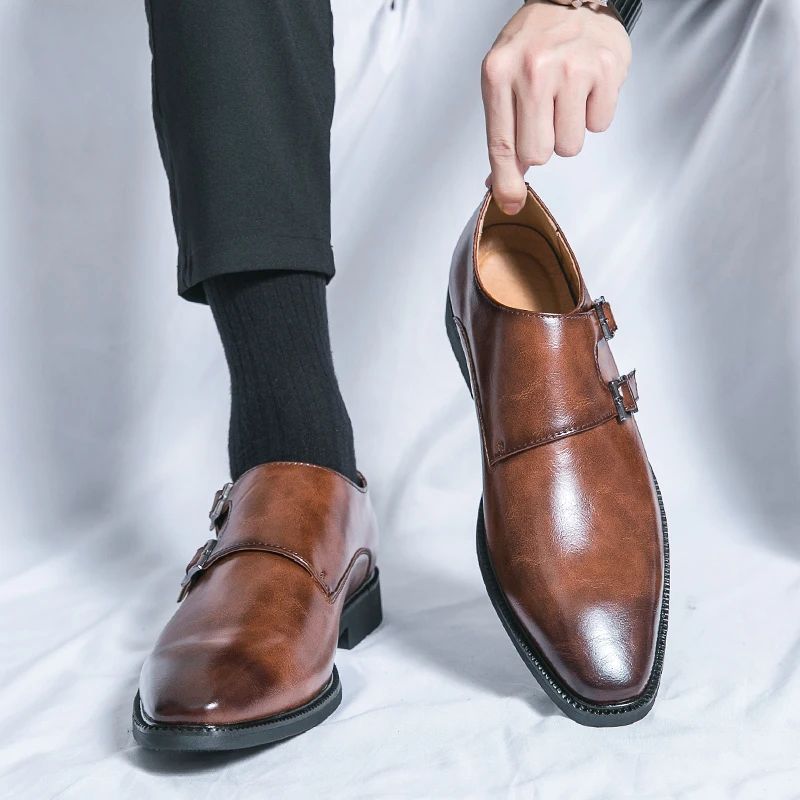
Different leathers require adjustments to this process. For example, oil-tanned leathers need minimal cleaning, while finished leathers can withstand slightly more moisture. Never use household soaps or detergents, as these strip essential oils and leave damaging residues.
For more specific techniques on maintaining the pristine appearance of your footwear, our ultimate guide to pristine leather loafers offers detailed step-by-step instructions for addressing specific types of soil and stains.
Nourishing Your Leather: The Art of Proper Conditioning
Conditioning is arguably the most crucial aspect of leather care. It replenishes the natural oils that evaporate over time, preventing the dreaded cracking and hardening that ruins otherwise beautiful footwear.
Selecting the right conditioner depends primarily on your leather type and climate conditions. Dry climates necessitate more frequent conditioning with richer products, while humid environments require lighter, less frequent applications to prevent oversaturation.
Proper Conditioning Technique:
- Start with clean, dry leather (conditioner traps dirt if applied to soiled surfaces)
- Test on an inconspicuous area first, particularly with darker or colored conditioners
- Apply sparingly with a clean cloth or fingers using small circular motions
- Allow 15-30 minutes for absorption (longer for thicker leathers)
- Buff away any excess with a clean cloth
- Allow 24 hours before applying any additional products
The “less is more” principle is especially important with conditioning. Over-conditioned leather becomes darkened, floppy, and can develop a tacky surface that attracts dirt. Under-conditioned leather becomes dry, stiff, and eventually develops permanent cracks.
Signs that your footwear needs conditioning include:
* Leather feels dry or stiff
* Color appears lighter than usual, especially in creases
* Surface feels rough rather than supple
* Visible small cracks beginning to form, particularly in flex points
Most quality footwear benefits from conditioning every 3-6 months with regular wear, though this varies significantly based on wear frequency, climate, and leather type. Our collection of women’s leather penny loafers demonstrates the beautiful results of properly conditioned leather that maintains its suppleness and character for years.
Restoring Appearance: Polishing Techniques for Smooth Leathers
Polishing adds the finishing touch to smooth leather care, restoring color richness and adding protection with varying degrees of shine. Understanding the differences between polish types helps achieve desired results without damaging the leather.
Comparison: Cream vs. Wax Polish
| Aspect | Cream Polish | Wax Polish |
|---|---|---|
| Primary benefit | Color restoration & nourishment | Protection & shine |
| Shine level | Subtle, natural | Medium to high gloss |
| Penetration | Moderate | Minimal (surface only) |
| Water resistance | Low to moderate | High |
| Application difficulty | Easy | Moderate to difficult |
| Best for | Regular maintenance | Formal shoes, toe caps |
For most premium leather footwear, cream polish provides the ideal balance of color enhancement and nourishment. Apply it sparingly with a cloth using small circular motions, allow it to dry to a haze, then buff with a clean cloth or horsehair brush to develop the shine.
Wax polish creates a more protective barrier with higher shine but requires more careful application:
1. Apply in very thin layers using a cloth wrapped around your fingers
2. Work in tiny circles, focusing on one small area at a time
3. Allow each layer to dry completely before buffing
4. Add multiple thin layers for higher shine rather than one thick layer
5. Buff vigorously between layers with a clean cloth
For dress shoes requiring a mirror shine (typically just the toe cap and heel counter), the “spit shine” technique using minute amounts of water with wax polish creates an impressive high-gloss finish, though this level of shine isn’t necessary or appropriate for casual styles.
Those interested in specific care techniques for heeled styles should explore our guide to caring for leather loafers with heels, which addresses the unique considerations for these designs.
Weatherproofing Your Investment: Protection Strategies
Protecting your leather footwear from environmental damage significantly extends its lifespan. Modern protectants create invisible barriers against water, stains, and salt without compromising the leather’s breathability.
Types of Protective Products:
- Water repellents: Create invisible barriers that cause water to bead rather than absorb
- Stain guards: Prevent oils and liquids from penetrating the leather
- All-weather protectors: Combine water and stain resistance for comprehensive protection
Application requires careful attention to detail:
1. Always start with clean, dry footwear (ideally freshly conditioned)
2. Apply in a well-ventilated area, as many protectants use aerosol delivery
3. Hold spray 6-8 inches away from the surface
4. Apply in light, even coats rather than heavy application
5. Allow to dry completely (typically 24 hours) before wearing
6. Test effectiveness by dropping small amounts of water on an inconspicuous area—it should bead rather than absorb
Protection should be reapplied regularly, as it diminishes with wear and exposure. Most footwear benefits from reapplication every 3-4 weeks during heavy use or adverse conditions, and before seasonal storage.
The key to effective protection is balancing water resistance with breathability. Over-applying protectants can trap moisture inside the shoe, potentially causing more damage than exposure to the elements.
For specific techniques to shield your footwear from moisture damage, our guide to protecting suede loafers from water offers valuable strategies that apply to multiple leather types.
Specialized Care Techniques for Suede and Nubuck
Suede and nubuck require fundamentally different care approaches than smooth leathers. Their brushed surfaces create their distinctive texture and appearance but also make them more vulnerable to staining and matting.
Essential Suede Care Tools:
- Crepe or rubber brush: For regular maintenance and nap restoration
- Brass or wire brush: For stubborn stains and matted areas (use gently)
- Suede eraser: For removing scuffs and small stains
- Specialized suede cleaner: For deeper cleaning without damaging nap
- Suede protectant spray: For repelling water and stains
Daily care for suede involves gentle brushing with a crepe brush, always working in the same direction to maintain a consistent nap. For cleaning:
- Start with dry brushing to remove surface dirt
- Use a suede eraser on any scuffs or small stains, gently rubbing the affected area
- For more stubborn stains, use a specialized suede cleaner following package directions
- After cleaning, brush vigorously to restore the nap
- Allow to dry completely away from direct heat
- Apply suede protectant spray once dry
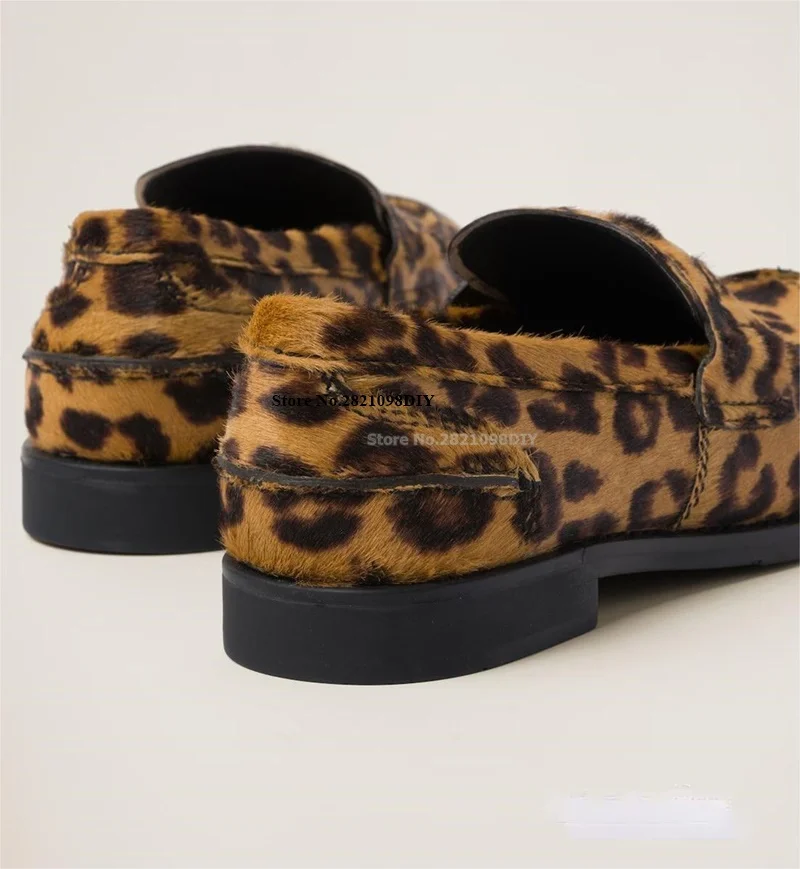
Water spots on suede require special attention. Rather than spot cleaning, which creates uneven appearance, lightly dampen the entire surface evenly with a spray bottle, then stuff with paper and allow to dry before brushing to restore the nap.
Oil stains on suede are particularly challenging. Blotting immediately with absorbent paper and applying cornstarch or talcum powder to draw out the oil offers the best chance of removal, though professional intervention may be necessary for significant stains.
For comprehensive guidance on maintaining the distinctive texture and appearance of brushed leathers, our care guide for suede loafers offers detailed techniques for addressing common challenges.
Patent Leather Care: Maintaining the Glossy Finish
Patent leather’s distinctive high-gloss finish requires specific care techniques that differ significantly from other leather types. Its coated surface repels water naturally but is vulnerable to cracking and dulling over time.
Patent Leather Care Essentials:
- Clean with a soft cloth dampened with warm water to remove dust and fingerprints
- For stubborn marks, a small amount of mild soap (like facial soap) on a damp cloth works without damaging the finish
- Never use standard leather products (conditioners, polishes) on patent leather—they create a cloudy appearance
- Address scuffs with specialized patent leather restorers or small amounts of petroleum jelly buffed gently
- Store patent leather items with tissue paper between them to prevent sticking
Patent leather’s most common issues include:
- Scuffs and scratches: Minor ones can often be buffed out with a soft cloth; deeper scratches may require specialized patent leather repair products
- Stickiness: Often occurs in hot weather or with age—wipe with a cloth dampened with a solution of equal parts water and white vinegar, then buff dry
- Cracking: Primarily prevented through proper storage away from temperature extremes and avoiding prolonged flexing when cold
While patent leather doesn’t require conditioning like other leathers, it benefits from specialized patent leather creams that maintain flexibility in the finish coating. Apply these products sparingly with a soft cloth, then buff to restore shine.
For those interested in exploring the sleek elegance of high-gloss footwear, our collection of women’s black flat loafers includes patent options that make a sophisticated statement.
Storage Secrets: Preserving Your Footwear When Not in Use
Proper storage is often overlooked but critically important for leather longevity. Even the most meticulously maintained footwear can be damaged by improper storage conditions.
Optimal Storage Environment:
- Temperature: Consistent moderate temperature (60-80°F)
- Humidity: 40-60% relative humidity (use dehumidifiers or silica gel packets in damp areas)
- Air circulation: Allow leather to breathe rather than sealing in airtight containers
- Light exposure: Store away from direct sunlight to prevent fading
Essential Storage Tools:
- Cedar shoe trees: Maintain shape while absorbing moisture and neutralizing odors
- Dust bags or cotton pillowcases: Protect from dust while allowing airflow (avoid plastic bags)
- Boot shapers or rolled acid-free paper: Prevent tall boots from creasing and collapsing
Before storing footwear for extended periods:
1. Clean thoroughly to remove all dirt and residue
2. Condition appropriately for your leather type
3. Allow to dry completely (at least 24 hours)
4. Insert cedar shoe trees
5. Place in dust bags
6. Store on shelves rather than stacked to prevent pressure damage
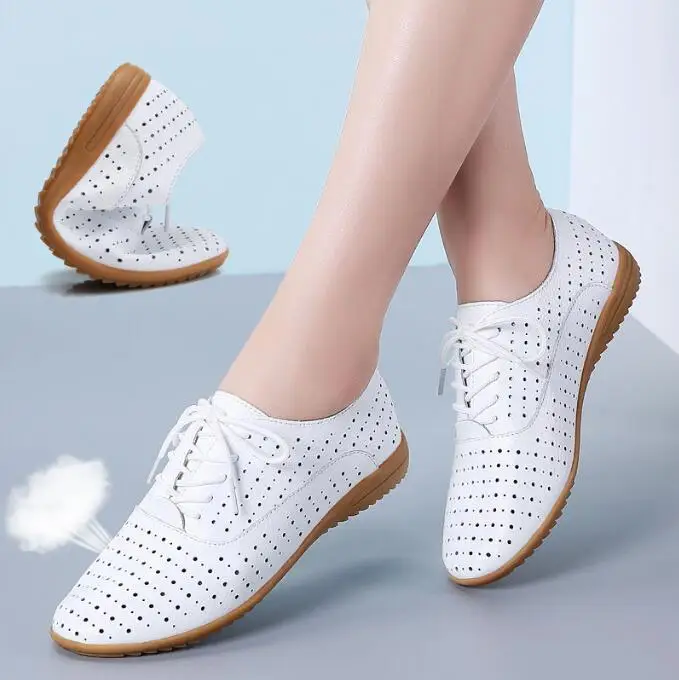
Common storage mistakes include using newspaper (the ink can transfer to leather), storing near heating vents or in attics/basements with temperature fluctuations, and using plastic bags that trap moisture and promote mildew.
For footwear worn seasonally, proper off-season storage is particularly important. Inspect stored items monthly if possible, airing them briefly and checking for any developing issues.
Troubleshooting Common Leather Footwear Problems
Even with regular care, leather footwear occasionally develops problems requiring specific interventions. Addressing these issues promptly prevents more serious damage.
Scuffs and Scratches
Minor scuffs on finished leathers often respond to gentle buffing with a soft cloth. For deeper scratches on smooth leather:
1. Clean the area thoroughly
2. Apply a small amount of matching cream polish
3. Buff gently until the scratch becomes less visible
4. Consider color-matched touch-up products for more significant damage
Water Damage and Stains
- Allow wet leather to dry naturally at room temperature, away from direct heat
- Insert shoe trees to maintain shape during drying
- Once dry, assess for water spots or staining
- For water spots on smooth leather, light conditioning often evens out the appearance
- For persistent water marks, specialized leather stain removers may help
Salt Stains
Winter salt stains require immediate attention:
1. Mix equal parts white vinegar and water
2. Dampen a cloth with the solution and gently wipe affected areas
3. Follow with clean water wipe to remove residue
4. Allow to dry completely
5. Condition to restore moisture balance
Dryness and Cracking
Once cracking begins, complete repair is difficult, but you can prevent further damage:
1. Clean gently to remove all dirt
2. Apply leather conditioner, focusing on affected areas
3. Allow longer absorption time than usual
4. Repeat conditioning over several days
5. Use leather fillers for deeper cracks, followed by color restoration
Mold and Mildew
Address immediately to prevent spread:
1. Take footwear outside to avoid spreading spores
2. Use a soft cloth dampened with rubbing alcohol to wipe affected areas
3. Allow to dry completely in sunlight if possible
4. Apply anti-fungal spray designed for leather
5. Ensure proper ventilation during future storage
For more comprehensive approaches to maintaining both smooth and textured footwear, our complete guide to leather and suede care offers in-depth solutions for a wide range of common issues.
Seasonal Considerations: Adapting Your Care Routine
Different seasons present unique challenges for leather footwear, requiring adjustments to your care routine to provide adequate protection.
Winter Care Essentials:
- Apply robust waterproofing before the first snow or rain
- Wipe down footwear immediately after exposure to moisture or salt
- Use cedar shoe trees overnight to absorb excess moisture
- Allow 24-48 hours of rest between wearings during wet conditions
- Keep leather conditioner nearby for more frequent applications during dry winter months
- Address salt stains immediately using the vinegar solution method
Summer Care Priorities:
- Protect leather from direct sunlight to prevent fading and drying
- Use breathable shoe bags rather than plastic when traveling in humid conditions
- Apply lighter conditioning formulations more frequently in extreme heat
- Allow extra drying time between wearings during humid weather
- Consider anti-fungal treatments preventatively for footwear worn in hot, humid conditions
- Rotate footwear more frequently during sweaty summer months
During transitional seasons, inspect your footwear collection and prepare for upcoming conditions. Before storing seasonal styles:
1. Clean thoroughly
2. Address any developing issues
3. Condition appropriately
4. Apply protection suitable for storage conditions
5. Insert cedar shoe trees
6. Store in breathable bags on shelves
For more specific advice on maintaining your favorite styles year-round, our guide to leather loafers through seasons offers seasonal wear and care tips to maximize longevity.
Professional Care: When to Seek Expert Help
While most leather care can be performed at home, certain situations warrant professional intervention. Recognizing these scenarios saves time and prevents additional damage from DIY attempts.
Issues Best Left to Professionals:
- Sole replacement or repair
- Structural damage to the upper
- Significant color restoration
- Deep cuts or tears requiring stitching
- Stretched or misshapen footwear requiring relasting
- Comprehensive restoration of vintage or severely neglected pieces
Professional services typically include cleaning, conditioning, and polishing alongside structural repairs. Costs vary widely depending on location and required services, from $25-50 for basic reconditioning to $80-200+ for major repairs including resoling.
When seeking a professional leather specialist:
1. Ask for recommendations from quality footwear retailers
2. Review examples of their previous repair work
3. Inquire about their experience with your specific leather type
4. Ask detailed questions about their repair approach
5. Request a written estimate before proceeding
Signs that resoling is needed include worn treads, separation between sole and upper, or the feeling of uneven wearing. Addressing these issues promptly prevents damage to the footwear’s structure that could render it unrepairable.
Women's Comfortable Flat Loafers, Women's Leather Flat Loafers, Women's Round Toe Flat Loafers
$124.88 Select options This product has multiple variants. The options may be chosen on the product pageWomen's Black Flat Loafers, Women's Black Penny Loafers, Women's Classic Tassel Loafers
$194.28 Select options This product has multiple variants. The options may be chosen on the product pageWomen's Loafer Mules, Women's Suede Flat Loafers
$190.23 Select options This product has multiple variants. The options may be chosen on the product pageWomen's Black Flat Loafers, Women's Classic Penny Loafers, Women's Comfortable Flat Loafers
$75.28 Select options This product has multiple variants. The options may be chosen on the product pageWomen's Block Heel Loafers, Women's Leather Flat Loafers, Women's Leather Penny Loafers
$295.19 Select options This product has multiple variants. The options may be chosen on the product pageWomen's Comfortable Flat Loafers, Women's Leather Flat Loafers
Price range: $187.31 through $197.21 Select options This product has multiple variants. The options may be chosen on the product page
Extending Lifespan: Proactive Habits Beyond Cleaning
Beyond regular cleaning and conditioning, certain wearing and handling habits significantly impact leather footwear longevity.
Key Habits for Maximum Longevity:
Implement a rotation system: Never wear the same pair of leather shoes two days consecutively. Ideally, maintain 3-4 pairs in regular rotation to allow each 24-48 hours of rest between wearings.
Use shoe horns: Always use a long shoe horn when putting on footwear to prevent crushing the heel counter, which weakens structure over time.
Practice proper removal: Unlace shoes sufficiently before removing them and avoid kicking off shoes using the opposite foot.
Protect from elements: Carry alternate footwear during inclement weather when possible, or apply appropriate protection before exposure.
Conduct weekly inspections: Regularly examine shoes for developing issues—loose stitching, heel wear, or early signs of sole separation—addressing problems before they escalate.
Break in new footwear gradually: Wear new leather shoes for increasing periods, starting with just 1-2 hours and gradually extending wearing time over 1-2 weeks.
Be mindful of surfaces: Avoid unnecessarily rough surfaces, and take care when driving to prevent premature wear on heel edges.
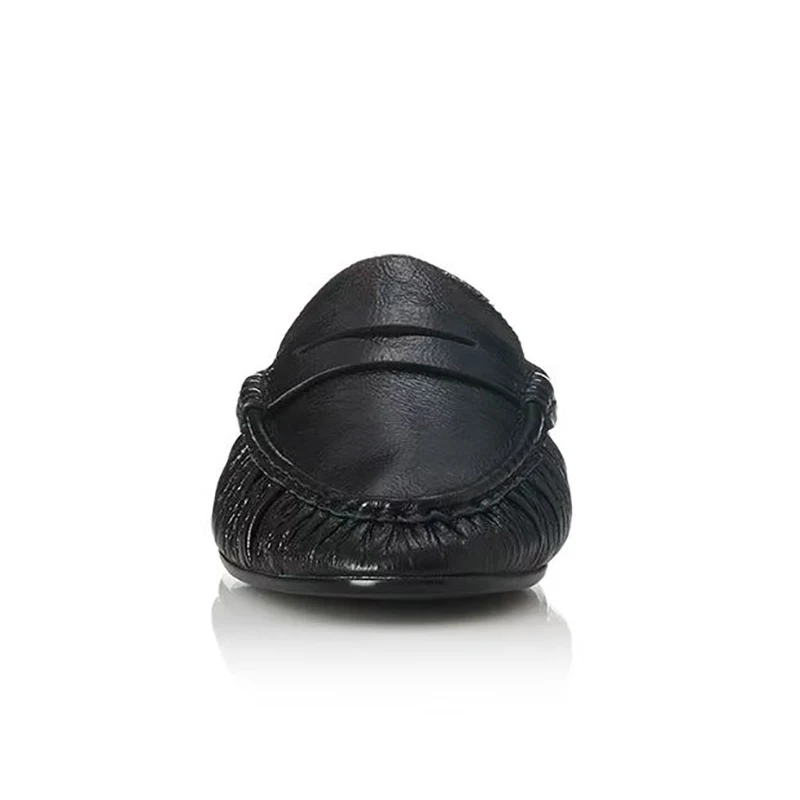
For optimal longevity, footwear rotation is perhaps the most important habit. Research shows that shoes worn daily last significantly less than half as long as those worn every third day, making a rotation system the most cost-effective approach to footwear ownership.
Should You Use Household Products? Myths and Facts
The internet abounds with household “hacks” for leather care, but many do more harm than good. Understanding which alternative solutions are safe versus potentially damaging helps protect your investment.
| Household Product | Common Claim | Reality |
|---|---|---|
| Olive oil | Natural leather conditioner | Temporarily softens but eventually turns rancid, causing odor and damage |
| Vinegar | Cleans leather effectively | Good for salt stain removal when diluted, but too acidic for regular cleaning |
| Baking soda | Removes odors | Effective for odors but too alkaline for leather, causing drying |
| Petroleum jelly | Waterproofs and conditions | Creates an effective barrier but can trap moisture and eventually dry out stitching |
| Furniture polish | Shines leather | Contains silicones that prevent leather from breathing properly |
| Baby wipes | Gentle leather cleaners | Often contain alcohol that dries leather; fragrance can discolor |
Some household alternatives that are genuinely effective include:
* Dish soap (very mild, dye-free) at weak dilution for cleaning smooth leather
* Distilled water with a few drops of castile soap for gentle cleaning
* Lanolin (wool fat) as a natural conditioner in a pinch
While specialized leather care products represent an additional expense, they typically offer better value considering the cost of replacing premium footwear. Budget-friendly options from reputable leather care brands often perform better than expensive alternatives that rely more on marketing than formulation quality.
For more detailed comparisons between care approaches for different types of leather materials, our leather versus suede maintenance guide offers practical insights based on material composition.
FAQ: Expert Answers to Common Leather Care Questions
How often should I condition my specific leather type?
Conditioning frequency depends on wear, environment, and leather type. Generally, full-grain leather benefits from conditioning every 3-4 months with regular wear. Finished leathers may need conditioning only every 4-6 months. Oil-tanned work boots often need monthly conditioning when worn daily. The key indicator is appearance and feel—condition when leather feels dry or looks lighter than usual.
Is it possible to restore severely neglected leather?
While severely neglected leather can be improved, complete restoration depends on whether structural damage has occurred. If the leather has cracked completely through or hardened beyond flexibility, full restoration is unlikely. However, leather with surface cracks, extreme dryness, or fading can often be significantly improved through deep cleaning, repeated gentle conditioning sessions, and color restoration products.
Do expensive leather care products make a meaningful difference?
Price doesn’t always correlate with quality in leather care products. What matters most is the ingredient list—look for natural waxes, lanolin, beeswax, and jojoba oil rather than silicones and petroleum distillates. Mid-priced products from established leather care specialists often provide better results than generic mass-market brands or overpriced luxury-branded options.
Can I use the same products on all my leather items?
While basic categories apply across items (conditioners for smooth leather, specialized products for suede), footwear often benefits from formulations specifically designed for the flexing and environmental exposure shoes experience. Handbag leather conditioner may be too light for boots, while boot oil may be too heavy for dress shoes. Match the product to both the leather type and the item’s function.
How do I maintain colored leather without fading?
Colored leather requires extra care to prevent fading and color transfer. Use colorless, pH-neutral cleaners, and test any product on an inconspicuous area first. UV protection sprays help prevent sun fading, while color-specific conditioners can maintain vibrancy. For scuffs that remove color, look for color-matched touch-up products rather than attempting to mix your own.
Are waterproofing sprays safe for all leather types?
No—waterproofing sprays designed for smooth leather can ruin suede and nubuck by clumping the nap. Silicone-based waterproofers can prevent proper conditioning of oil-tanned leathers. Always select waterproofing products specifically formulated for your leather type, and never apply to dirty or unconditioned leather.
What’s the single most important leather care habit?
If limited to just one habit, regular brushing with a quality horsehair brush would provide the most benefit for the least effort. This simple practice removes damaging particles, redistributes oils, restores nap on suede, and maintains appearance—all in just seconds per day. Combined with shoe trees and rotation, these three habits form the cornerstone of effective leather care.
At Artisan Haul, we believe in helping customers maximize the lifespan of their premium footwear investments through proper care and maintenance. With the techniques outlined in this guide, your favorite leather shoes can provide comfort, style, and satisfaction for many years to come.

